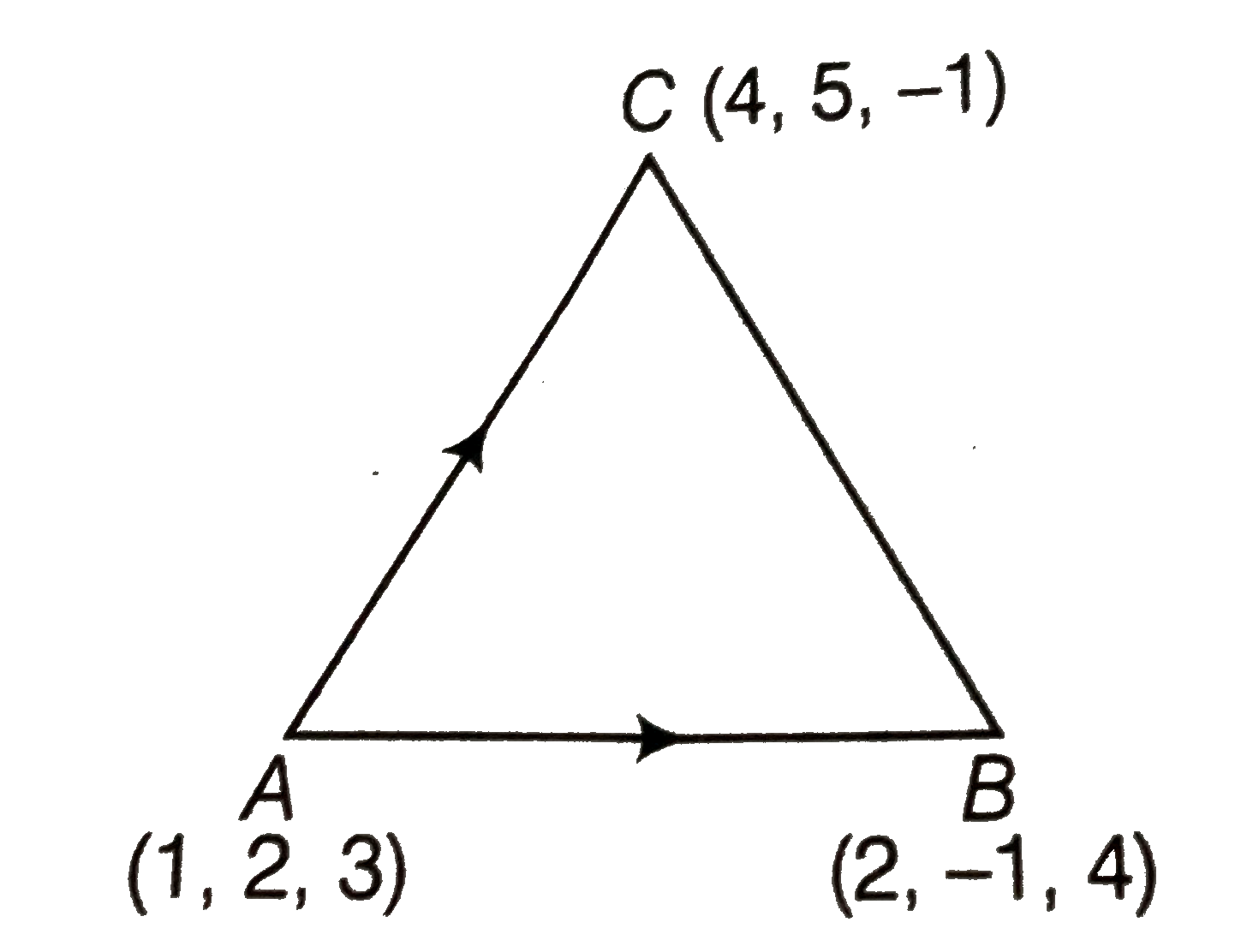Using vectors, find the area of the ΔABC with vertices A(1, 2, 3), B(2, -1, 4) and C(4, 5, -1)
Here, −−→AB=(2−1)ˆi+(−1−2)ˆj+(4−3)ˆk
=ˆi−3ˆj+ˆk
and −−→AC=(4−1)ˆi+(5−2)ˆj+(−1−3)ˆk
3ˆi+3ˆj−4ˆk

∴−−→AB×−−→AC∣∣
∣
∣∣ˆiˆjˆk1−3133−4∣∣
∣
∣∣
=ˆi(12−3)−ˆj(−4−3)ˆk(3+9)
=9ˆi+7ˆj+12ˆk
and ∣∣∣−−→AB×−−→AC∣∣∣=√92+72+122
=√81+49+144
√274
:. Area of ΔABC=12∣∣∣−−→AB×−−→AC∣∣∣
12√274 sq units
Topper's Solved these Questions
Similar Questions
Knowledge Check
The area of ΔABC with vertices A (2,1), B(3,4) and C (0.5) is
A1 sq. unitsB2 sq. unitsC3 sq. unitsD4 sq. units
Using vectors, find the area of the triangle with vertices A (1, 1, 2), B (2, 3, 5) and C (1, 5, 5).
View SolutionUsing vectors, find the area of Δ ABC whose vertices are
(i) A(1,1,2),B(2,3,5) and C(1,5,5)
(ii) A(1,2,3),B(2,-1,4) and C(4,5,-1)
(iii) A(3,-1,2),B(1,-1,-3) and C(4,-3,1)
(iv) A ( 1,-1,2),B(2,1,-1) and C(3,-1,2).
View SolutionFind the area of the triangle whose vertices are A(1, 2, 3), B(2, –1, 1)and C(1, 2, –4).
View SolutionFind the ate area of the triangle whose vertices are :
A (1,2,3) , B (2,-1,4) and C (4,5,-1).
View SolutionFind the area of the triangle with vertices A(1, 1, 2), B(2, 3, 5) and C(1, 5, 5).
View SolutionFind the area of the triangle whose vertices are A(1,2,3),B(2,3,1) and C(3,1,2)
View SolutionUsing integration, find the area of ΔABC, whose vertices are A(2,3),B(4,7) and (6,2).
View Solution